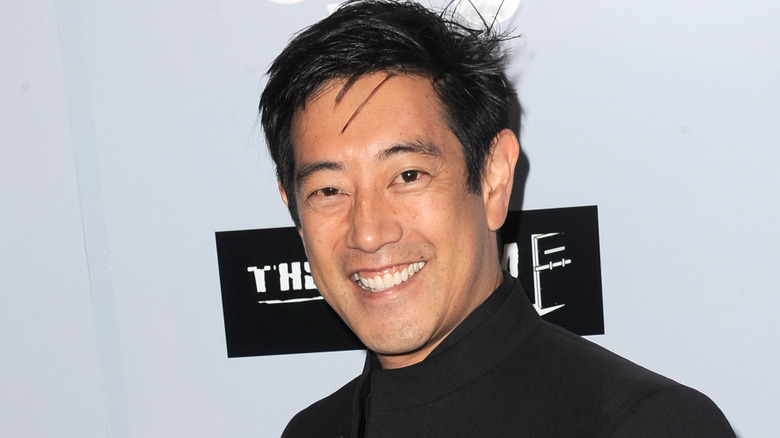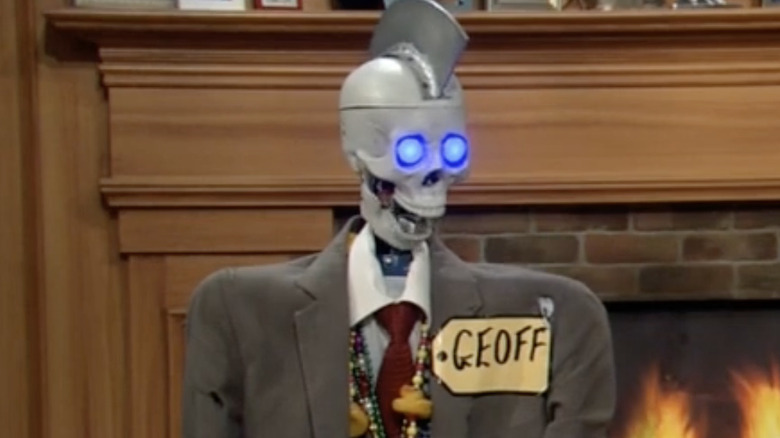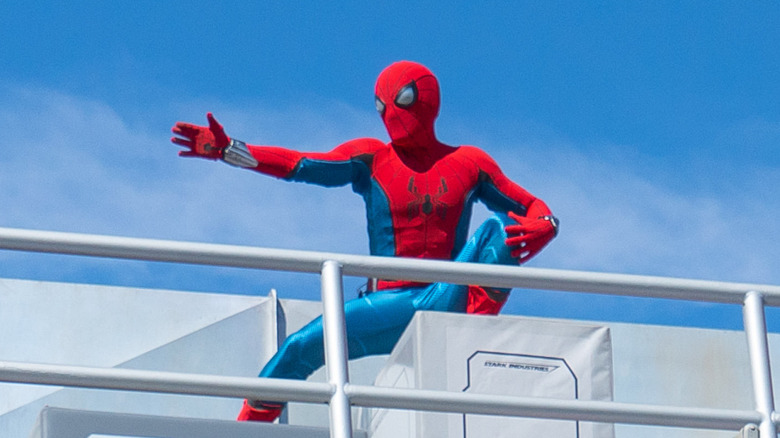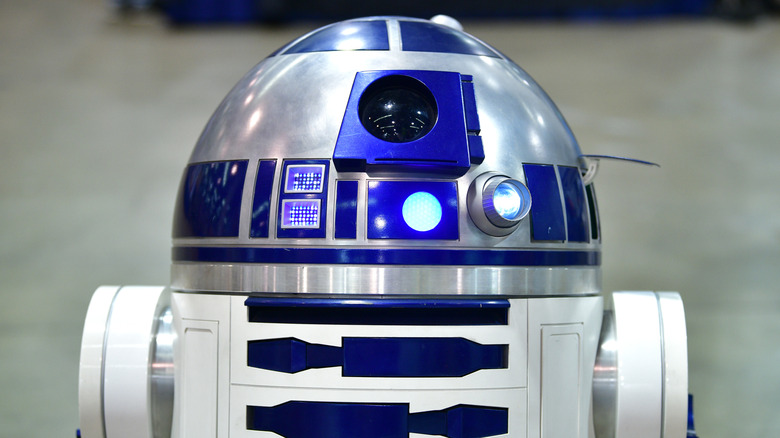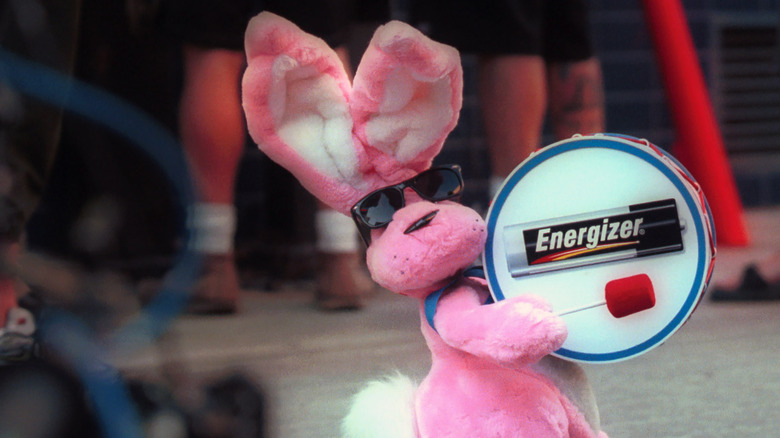5 Inventions You Didn't Know Grant Imahara Worked On
Best known for his 13-year stint as a host and tester on the Discovery Channel's wildly popular "MythBusters," Grant Imahara was one of the more famous and popular scientists of the 21st century. That fame and adulation came in large part because he worked on really cool stuff that appealed to the general public. Apart from the scaled-up, surprisingly educational, and dangerous experiments conducted on "MythBusters," Imahara did more of the same on the series "White Rabbit Project" and he lent his engineering and animatronics expertise to state-of-the-art technology for Disney and the "Star Wars" movies.
Certainly among the most tragic things to affect the cast of "MythBusters," Grant Imahara died at age 49 in 2020, after sustaining an aneurysm. Not only did he leave behind a library of television — he acted in a "Star Trek" show and appeared on the truth-telling "Drunk History," to mention just a couple – Imahara also made his mark on science. His legacy is one of creativity and invention; here are some of the amazing gadgets, robots, and pop cultural technology brought into existence by Grant Imahara.
Baby Yoda
In 2019, the hit Disney+ series "The Mandalorian" launched a new, instantly popular character into the "Star Wars" universe: The Child, aka Grogu, aka Baby Yoda. In the months following the debut of the tiny, adorable Baby Yoda as an effects-enhanced puppet on streaming television, Grant Imahara devoted his working hours to developing a real-world, extremely life-like version of the fictional alien being.
While working in a consulting capacity for Disney Research ("Star Wars" is a Disney-controlled property), Imahara devised and built a working model almost entirely on his own, relying on others only to make Yoda's skin and hair. "It's been three months of hard work and countless revisions," Imahara said when he unveiled his Baby Yoda on Instagram in March 2020. "I did all the mechanical design, programming, and 3D printed the molds. He's currently running a continuous sequence, but soon I'll be able to trigger specific moods and reactions, as well as incorporate sound."
Beyond just a passion and affinity for the work, Imahara had a reason to make his own "Star Wars" robot. "I knew I had to make my own Baby Yoda," Imahara told CNET. "And it could be a character I could bring to children's hospitals for charity work, which is something I've been committed to doing." After delays brought on by the COVID-19 pandemic, and after Imahara's death, Baby Yoda was dispatched to visit hospitalized children.
Geoff Peterson
"The Late Late Show with Craig Ferguson" aired on CBS from 2005 to 2015 with a decidedly irreverent approach to after-midnight television. Host Craig Ferguson improvised his way through the monologue, often tore up notecards bearing guest questions to have a more authentic chat, and instead of a supplicant human sidekick, he was aided in his duties by a maniacal stationary robot skeleton with the mundane human name of Geoff Peterson. Five years into the show's run, "The Late Late Show" didn't have a sidekick, until Ferguson asked celebrity engineer and "MythBusters" star Grant Imahara to make him one.
"Craig's a really big fan of 'MythBusters' and he knows I build robots," Imahara told Popular Mechanics in 2010. "When he started on Twitter, he called his followers the Robot Skeleton Army. Then he put two and two together and said, 'robot skeleton army, robot sidekick, Grant Imahara from 'MythBusters,' this is the perfect combination.'"
Imahara decided that Geoff Peterson should have the capacity for radio-controlled speech and to be maneuvered by hand. He designed the robot to be operated by an unseen, offstage remote control-wielding puppeteer, and to have his voice be provided by an actor nearby that travels through on-set speakers. The robot itself consisted of a plastic skeleton outfitted with two motors, control boards, and batteries, a lot of which served to operate Geoff Peterson's "bionic arm," capable of 90 degrees of motion.
A Spider-Man stuntronic
In 2018, the United States Patent Office received two requests for protection on a technology called "Ballistic robot system with spin and other controlled motion of robot during flight." A total of four patents were ultimately granted to a team that included Grant Imahara and other engineers working for Disney Enterprises, Inc. The filings represent cutting-edge developments in robotics; technology that had to be invented from scratch or improved in order to make a Disney theme park attraction a reality. Earlier, Imahara had joined Disney's research and development division, Walt Disney Imagineering, in 2017, to work on a project cryptically named "Stickman — Towards a Human Scale Acrobatic Robot."
In January 2020, the results of Imahara and company's toil were revealed. Stickman was really an animatronic Spider-Man that could sling webs, fly, and jump around tall buildings at Disney's California Adventure complex. What resembled a stunt performer dressed in full Spider-Man regalia could perform aerial stunts 65 feet off the ground; it was a "Stuntronic," or an exceptionally life-like behaving robot. Imahara's Spider-Man first appeared at Disney's Avengers Campus in 2021 and was showing up regularly by 2024.
A new R2-D2
Grant Imahara joined the special effects house Industrial Light and Magic in the late 1990s, just in time to assist in the production of "Star Wars: Episode I – The Phantom Menace," the first of three planned "Star Wars" prequel movies. The movie required the use of the droid character, R2-D2, but the robots built two decades earlier weren't functioning correctly and would stall on a track. Imahara led a crew to develop new R2-D2 robots, and he first installed larger wheels that wouldn't get stuck, built upon a more agile axis and operated with an electric wheelchair motor. "I handled the power electronics and the radio control system, including the mixing for the new steering components," Imahara explained to Make Magazine.
In the ramp-up to production on "Star Wars: Episode II – Attack of the Clones," ILM tasked Imahara with improving the electronics in every R2-D2 robot, including the distinctive dome lights, also known as logic displays. "I replaced the halogen/color wheel combo with two hockey puck-sized LED arrays driven by a microcontroller," he said. Because he knew the inner workings of the movie droids so well, Imahara was made one of three official R2-D2 operators.
The Energizer Bunny
While working as a special effects artist and engineer at Industrial Light and Magic in 2008, the company got the call from Eveready, the battery manufacturer that makes Energizer brand batteries, to create a new version of its long-standing mascot, the Energizer Bunny. The pink-colored, sunglasses-wearing, drum-wielding rabbit could no longer be used in its former state due to a falling out between Eveready and the Energizer Bunny's creator. Thus, Imahara was part of the crew that had to re-invent the robotic character and build several prototypes that could be used in television commercials.
"The electronics were in the drum. That was my job," Imahara said at a University of Alabama in Huntsville lecture in 2011 (via AL.com). He was also one of three people to ensure that the arms of all three robots built — Garth, Floyd, and Earl — functioned correctly, banging on the drum on command the way they should. Imahara specifically designed and installed a circuit to make the arms and ears go, along with working the radio programming. Free to work on the robotics and electronics to make the Energizer Bunny keep going and going, Imahara had just one directive: He had to use Energizer-brand batteries. Each robot required 44, held in a clip inside the drum.
